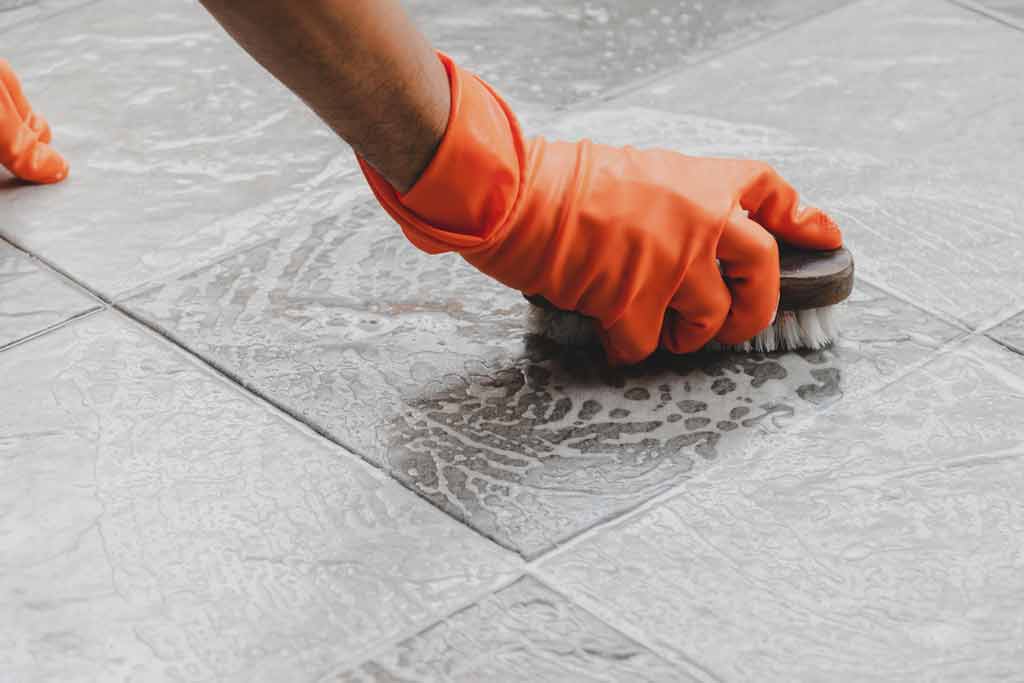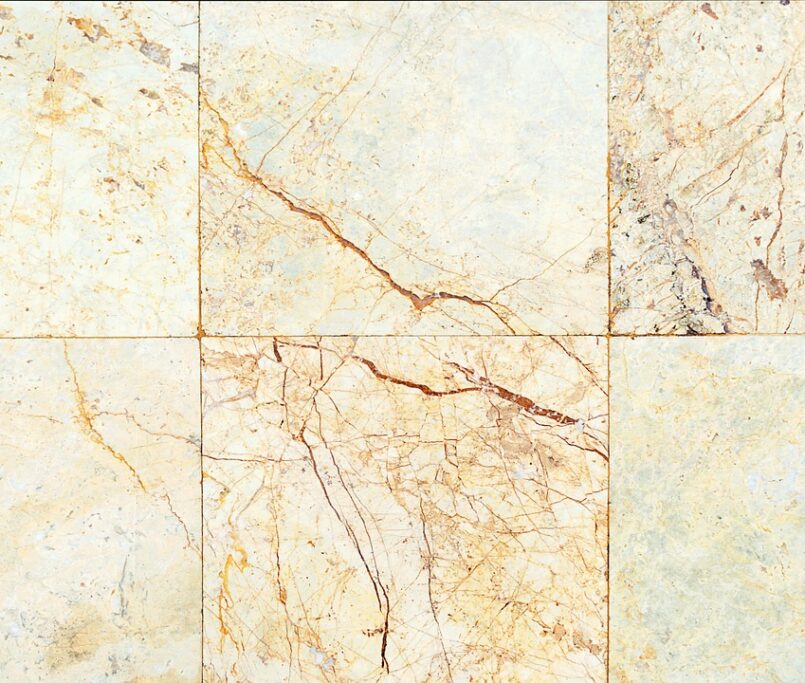Removing Dried White Cement from Tiles
Sometimes, as a result of minor accidents, cement can be smeared or rubbed on items or materials during construction. In such cases, how to remove the dried cement can become an important question. But don’t worry, in this article we will share with you both how you can remove white cement from tiles and the active items that can be effective during this process.
How to Remove Dried White Cement from Tiles
Cement is an essential component of constructions and cannot be avoided. The most vexing aspect of the cement is that if it settles above the tiles, it is extremely difficult to remove. You must be consistent and continue to try. The entire cement removal procedure is simple but time-consuming. Some common household products can remove cement from tiles if there is a thin layer or a small amount of cement. However, if there are numerous and thick layers of cement stains, you may need to use stronger acids. So, in this article we will present you two different methods, one for small and thin layers of cement and the second one is for thick layers of cement.
First of all, you should take some preventive measures:
- • To protect your skin and eyes, you must wear gloves, a coat, and glasses. Before beginning the cleaning process, try to keep proper ventilation. When the tile is glazed, use extra caution because even a mild acid like vinegar can ruin the glaze.
- And a list of thing you will need while removing white cement:
1. Eye and glove protection
2. A small brush
3. Soft cloth pieces
4. A bucket full of water
5. Detergent or soap
6. White Vinegar
7. Screwdriver with a flathead
8. Scrubbing pad
9. Scrappers and cleaner for phosphoric acid
Steps to Remove Small Amounts or Thin Layered White Cement from Tiles:
1. Find the areas where the cement stains are visible and use white vinegar to remove small spots and thin layers. White vinegar has enough acidic power to dissolve the cement from the tiles.
2. Apply enough vinegar to the cement, then cover it with a sponge or soft cloth. Pour some more white vinegar on the sponge and set it aside for an hour or two to allow the vinegar to settle on the cement.
3. Keep an eye on the vinegar’s wetness. If you suspect that it is evaporating due to hot weather or other factors, reapply it on a regular basis to keep the area moist.
4. When you notice that the cement is losing its grip on the tiles, it’s time to start scrubbing them off. Scrub the area with a scrubbing pad.
5. Scrub for a few minutes straight. Because the white vinegar has already loosened the cement, you will see the results and the scrubbed out cement on the pad very soon.
6. After cleaning the area, take a wet towel and wipe it down completely. If there are still some cement particles on the tiles, reapply vinegar and leave it on for a few minutes. Repeat the procedure.
7. When you’re finished clean the affected area with soap and water. It is critical to clean the white vinegar after the cement stains have been removed. Rinse the area twice to ensure that all of the acid has been removed from the tiles.
Steps to Remove Large Amounts or Thick Layered White Cement from Tiles:
1. To remove a larger amount of white cement from tiles, use a strong acid such as phosphoric acid. Such acids have the ability to cut through the layers of white cement. The white cement will eventually lose contact with the tiles, allowing you to quickly remove it.
2. Remove the thick layers with a scraper or metal scrubber before applying the acid. A flat-head screwdriver can also be used. All of these items, including the phosphoric acid cleaner, are available at your local hardware store. They are also available online.
3. It’s now time to use the strong acid to dissolve the remaining white cement. Apply the acid according to the manufacturer’s instructions. Do not forget to wear gloves, coat and protection glasses while meddling with the phosphoric acid.
4. You’ll notice that the cement has already begun to lose contact with the tiles. Scrub the area with a scrubber. After an hour remove the white cement from the surface.
5. Finally, thoroughly rinse the area with clean water. To remove any remaining acid or acidic smell, clean the surface and affected areas with soap and water.
How to Remove White Cement Glue
Refinishing a concrete floor is a difficult task, whether you’re removing carpet, laminate, linoleum, or ceramic tile. It’s one thing to remove the top layer, but now there’s the floor glue to deal with, and it won’t budge. Learn how to remove glue from white cement to achieve a smooth finish on your flooring.
- • Remove Glue from Concrete Using Boiling Water: Bring a pot of water to a boil on the stove over high heat. Pour hot water over the glue areas and then lay large towels over the spots to soak to remove carpet adhesive from cement or another glue type. When they are cool enough to handle, remove them from the floor one at a time and scrape up the soft glue with a scraping tool.
- • Remove glue from concrete with Ammonia: If boiling water doesn’t work to remove adhesive residue from concrete or sticky paint from your garage floor, try an ammonia solution. This liquid is a solvent, and mixing it with water and soap helps dissolve the glue from the concrete. In a large bucket, combine ammonia, hot water, and liquid detergent. Put on rubber gloves and slowly pour the liquid over the first patch of carpet glue. Allow it to rest for a few minutes before removing the glue with a putty knife or scrubbing brush. Continue to the next glue spot and repeat until all of the adhesive is gone. After you’ve finished, rinse the entire floor with water.
- • Remove Glue from Concrete with Heat: Heat is the most effective tool for softening and removing glue from concrete, but boiling water is a bit messy. An iron or heat gun is a good alternative floor adhesive remover for concrete. Pour some hot water over the first section of glue and use a heat gun to heat the spot for a couple of minutes to remove vinyl flooring adhesive from concrete or another type of glue. Scrape away the soft glue with a putty knife and throw the pieces away.
Does Vinegar Remove Cement?
Vinegar is an item mostly brought up when you try to remove dried white cement from tiles. Although vinegar does not dissolve concrete, it can degrade the cement that holds it together. Vinegar, as a weak, dilute acid, will only cause minor damage to concrete but will remove the shine from polished surfaces. In essence, acidic vinegar can degrade concrete by dissolving the cement that holds concrete together. When acid meets concrete, a chemical reaction occurs that can have unexpected results.
Vinegar is a concoction of acetic acid, water, and other organic compounds that impart flavor and color. Acetic acid is a weak acid, and vinegar typically contains less than 5% acetic acid. As a result, vinegar is a very dilute solution of a mild acid, and it is not very corrosive.
When it comes to the chemical reaction between vinegar and concrete, there are advantages and disadvantages. Vinegar is a mild acid that will not harm your home’s concrete surfaces, but it will tarnish a polished finish. Vinegar’s cement-dissolving properties can sometimes be beneficial rather than harmful. The good news is that vinegar can help with these home improvement projects.
However, some acids that are used to remove dried white cement from tiles are corrosive and hazardous. To use them safely, you’ll need goggles, coats and gloves. If you’re working with a small amount of cement, you might want to try vinegar first before investing in a stronger acid and safety equipment.
For your further inquiries you can contact Emin İnşaat.
You can reach our previous article from https://emininsaat.com.tr/en/what-are-the-differences-between-clay-brick-and-cement-brick/




Drying Times According to Cement Types - Emin İnşaat
11 August 2022[…] You can reach our previous article from https://emininsaat.com.tr/en/removing-dried-white-cement-from-tiles/ […]